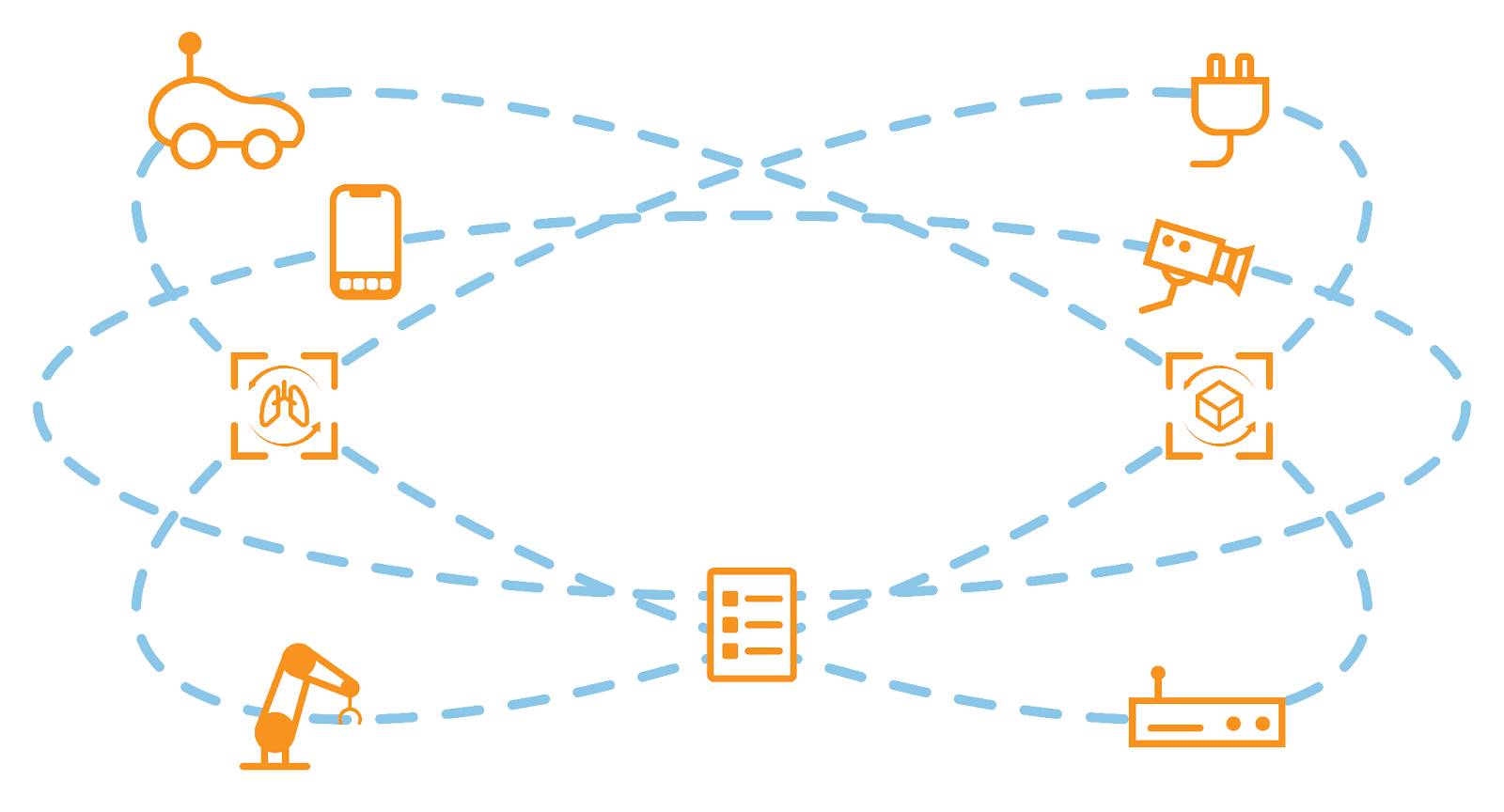Address the Challenges of Ubiquitous Connectivity
Learning Objectives
After completing this unit, you’ll be able to:
- Describe how the growth of digitization brings about ubiquitous connectivity.
- List the opportunities, applications, and risks associated with ubiquitous connectivity.
Interdependence That Arises from Ubiquitous Connectivity
All over the world, our everyday realities have changed dramatically because of ubiquitous connectivity. Before ubiquitous connectivity, we printed out directions to get to a new destination. Most of us watched the weather channel or checked the morning paper to find out the forecast for the week. We set the thermostat at home and couldn’t change the temperature once we left the house.
Suddenly, many of us find ourselves digitally connected all the time, and with our devices and data connected to one another. Networks, devices, and services are increasingly hyper-connected and interdependent, and operate on sophisticated shared infrastructures. Factors such as the speed, reliability, low latency (minimal delay), agility, and intelligence of communications architectures lead to significant changes in the way they are used and relied upon extensively throughout our environments.
From a security perspective, this reality brings about a number of challenges. In particular, how can your organization verify that upstream and downstream dependencies are secure? This question is also relevant for governments, which rely on digital systems for many of their critical infrastructures (CNIs) and services. Organizations require a more holistic approach to cyber risk management that considers the resilience of the digital ecosystem holistically.
Opportunities to Benefit from Ubiquitous Connectivity
Ubiquitous connectivity means that the number of internet-connected systems and devices has grown significantly in recent years. Your smartphone, wearables, and smart home devices improve the user experience and allow you to connect and perform business at scale. The growth of digitization brings about ubiquitous connectivity, with a rapid acceleration in the scale, pace, and complexity of the resulting systems—often referred to as the Internet of Things (IoT). A core component of this emerging communications and computational environment is the fifth generation (5G) technology.
5G Technology
This connectivity allows significantly faster and more reliable communications for a high number of mobile devices. The associated shifts in communications and analytics architectures used in 5G (such as network virtualization, slicing, seamless roaming, and edge computing) promise agile and tailored networks with unparalleled computational power and analytics supported by the cloud.
The value of 5G to the global economy is set to reach $13.2 trillion by 2035,* with its use in manufacturing, information and communications, wholesale and retail, public services, and other industries. These developments create the opportunity for organizations to use communications and data analysis to more efficiently and reliably monitor and control previously unconnected critical systems.
*Source: Based on IHS Markit, The 5G Economy: How 5G will contribute to the global economy, 2019
Key Applications of Ubiquitous Connectivity
Let’s dig into some examples of key applications of ubiquitous connectivity.
-
Enhanced mobile broadband: Provides faster connections, higher throughput, and greater capacity—which extends cellular coverage into diverse structures, such as large venues—and creates the ability to handle a larger number of devices using high bandwidth.
-
Fixed wireless access: Leverages 5G infrastructure to quickly and cheaply deliver an alternative to wired broadband, which provides a level of bandwidth capacity comparable to fiber optics.
-
Public safety communications: Enable resiliency and redundancy of communication paths, and the ability to communicate from anywhere, at any time, on any platform.
-
Augmented reality (AR) and virtual reality (VR): Provide AR/VR-enabled healthcare, which contributes to the transformation of mobile health and the wider introduction of telemedicine, which results in increased accessibility to quality healthcare.
-
Smart factories: Leverage the developments in IoT and automation to enable advanced predictive maintenance (that can lead to enhanced equipment ability and throughput), as well as remote maintenance, thus lowering operational costs.
-
Fleet and inventory management and tracking: Coordinate autonomous aircraft fleets through unmanned traffic management, thereby reducing the amount of fuel consumption and the number of accidents and crashes.
-
Energy and utilities: Reduce energy consumption and carbon dioxide emissions.
-
Autonomous cars: Enhance individual productivity through less time spent driving, and also enable remote vehicle health monitoring, an explosion in car infotainment, and even airborne taxis.

Knowledge Check
Ready to review what you’ve learned? The following knowledge check isn’t scored—it’s just an easy way to quiz yourself. To get started, drag the description in the left column next to the matching term on the right. When you finish matching all the items, click Submit to check your work. If you’d like to start over, click Reset.
Great work!
Sum It Up
In this unit, you’ve been introduced to how the scale of digitization is bringing about ubiquitous connectivity and the resulting benefits to us. In the next unit, you learn about AI and its applications, as well as actions to address the challenges associated with protecting AI technologies.
Resources
-
PDF: World Economic Forum (WEF): The Impact of 5G: Creating New Value across Industries and Society
-
PDF: Cybersecurity and Infrastructure Security Agency (CISA): The Internet of Things: Impact on Public Safety Communications
